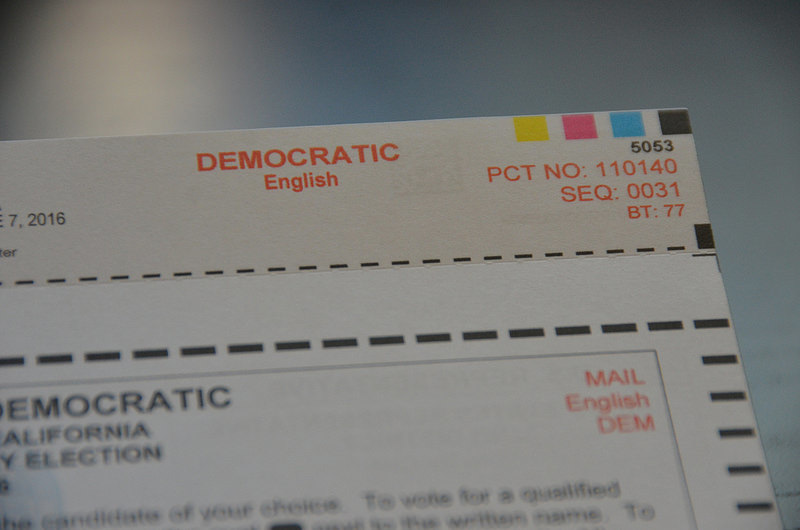| Author Tom Peters has said, “If you're not confused, you're not paying attention.” He would love trying to vote in Utah this year. As the lieutenant governor’s office puts it, the state is in transition when it comes to casting ballots. You might say we’ve gone from hanging chads to a system where voters practically need a decoder ring to figure out what to do. |
| | In a state where people increasingly view voting as a bother, this doesn’t bode well. A primary election looms June 28. That may come as a surprise to some people, especially those Republicans who unregistered from the party as a protest against Donald Trump but who still want to choose between Gov. Gary Herbert and his challenger, Jonathan Johnson. But don’t worry, there is hope. I warn you, the following description is complicated. You may want a pencil and some scratch paper. If you live in Salt Lake County, the primary will be conducted almost entirely by mail. A few poling locations will be open for early voting from June 14-24, and again on Election Day. You already should have gotten notice in the mail that you’re going to receive a certain type of ballot — Republican, Democratic or unaffiliated — depending on how you registered. However, if you live in Utah County, traditional polling booths will rule Election Day. You may vote by mail only if you request an absentee ballot. Early voting will be allowed at certain locations. Other counties have different rules. In total, 11 of them will conduct the election entirely by mail. Another nine will combine mail-in voting with limited polling locations. The remaining nine counties are conducting elections as usual, with regular polling locations on Election Day. (Go to elections.utah.gov to see how things are where you live.) You must be a registered Republican to vote in Republican primaries, including the high-profile gubernatorial race. You may vote in the Democratic primaries regardless of party affiliation, but if you’re not a registered Democrat and you live in a county where the election is conducted by mail, you must notify the county of your intention to do so. Otherwise you won’t get the right ballot. But if you forget to do that, you may get your preferred ballot at specific voting locations on Election Day in certain counties. And here’s the hopeful part — you may register as a Republican on the spot in some counties, even if you previously unregistered (but not if you’re a registered Democrat). If you forgot to register to vote at all, you may even do that on Election Day, but not in all counties. Clear as mud? If you’re an optimist, this mishmash will ward off anyone trying to commit large-scale election fraud. No bad guy (or gal) has that kind of time. If you’re like the rest of us, you may be wondering where all this is leading. How in the name of Bush-Gore and the Supreme Court did we get here? The simple version is that after the 2000 national election debacle, Congress allocated money to help states buy electronic voting machines. But now those are old. States can’t afford to fix them, and virtually no one makes them any more. A report last year, “America’s Voting Machines at Risk,” published by the nonpartisan Brennan Center, said this problem is bound to lead to another election failure. Some states have found it less expensive, and simpler, to conduct elections by mail. Mail-in ballots also eliminate arguments over whether to require people to show I.D. before entering the voting booth. In Utah, where people believe government functions best when closest to the people, the Legislature has empowered counties to decide how to conduct elections. And so — voila! — confusion. Elections are among the most important functions a government performs. They must be fair and reliable, but they also should be easy to navigate. It’s easy to see where this is headed. Voting by mail is the wave of the future here, at least for a while. That’s fine. I only suggest the Legislature get involved so we’re all on the same page. Then we just have to hope the Postal Service doesn’t go belly up. |


 RSS Feed
RSS Feed

